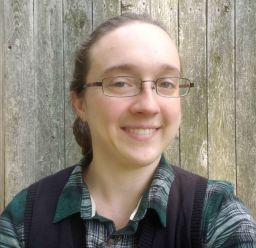Editor’s Note: Natalie Schriefer, MFA, is an editor of academic research. Her writing often focuses on pop culture, bisexuality and coming of age. Find her on X @schriefern1 or on her website at www.natalieschriefer.com. The views expressed in this commentary are her own. View more opinion at CNN.
In her 2024 Netflix special “Have It All,” stand-up comedian Taylor Tomlinson has a bit about coming out as bisexual. Of telling a friend, she says, “It’s scary to just say you’re bisexual, because then someone’s always like, ‘F**king prove it.’” Though the joke is delivered to laughs, Tomlinson later adds, “Everyone’s real aggressive about it.”

It’s a small segment of a show addressing dating apps, anxiety and Hugh Jackman, but it’s no less important: Tomlinson addresses her experience of bisexuality, an identity that is sometimes overlooked.
This is often due to something called bi erasure. The Human Rights Campaign, an LGBTQ+ advocacy group, characterizes this as the exclusion bisexual people face from both the straight and queer communities due to assumptions that they are “straight or gay based on the gender of the person they are currently dating.” The Bisexual Resource Center defines it similarly as bi+ antagonism.
Though Tomlinson doesn’t mention these terms by name, the pressure that she talks about — of having to prove that she’s attracted to women, which wasn’t required when she dated men — is a common bi experience. It can sour otherwise happy events, such as Pride Month in June or Bi Visibility Day in September. It leaves people questioning if they’re bi enough to be a “real” bisexual.
Trying to quantify this kept me in the closet for years. I attended my first Pride events, ranging from campus events in 2014 to local parades in 2019, as the straight person I was pretending to be. Never mind that I had been actively avoiding my bisexuality — I slapped on some rainbows and called myself an ally.
In those early days, I hadn’t yet worked out whether I belonged at Pride. Privately I could admit the truth: Yes, I was attracted to women. Yes, I was also attracted to men. In public, I was scared of exactly what Tomlinson talked about: that if I came out, I’d have to prove my sexuality. I’d have to meet some minimum number of queer crushes, or have slept with a certain number of people. What that number might be, I could never identify — so I stayed in the closet, which felt safer.
When I finally did come out in 2021, very publicly via my writing, I didn’t feel any better. Instead, I felt sick, with a queasiness that lingered for months. I continued second-guessing myself, so much so that I could hardly enjoy Pride events. I folded myself behind my friends as we walked through the crowds. I stared at the grass while the Connecticut Gay Men’s Chorus sang on stage. I couldn’t even meet vendors’ eyes. I was waiting for someone to tell me I was a fake.
At the time, I had no idea how common this feeling of unworthiness was among bisexual people. I didn’t have queer role models, let alone bi role models, to name what I was experiencing: the ramifications of bi erasure.
Back then, I didn’t have Tomlinson’s special to help me see bi erasure for what it was. Representation, even in the form of a few short minutes, can help people see how ridiculous it is to try to “prove” one’s sexuality on demand — not to mention invasive, as one of Tomlinson’s more explicit jokes about Margot Robbie suggests. I can see that, now, nearly 10 years after my first queer crush.
One helpful definition I found pre-Tomlinson came from bi.org, a project of the American Institute of Bisexuality, a non-profit organization that promotes research and education on bisexuality in the US. Its definition noted that bisexuality can include attraction OR behavior. That “or” is important. It’s the piece I was missing at my early Pride events, when I was too busy quantifying my behavior and assuming I came up short. The truth is, there are no quotas. Whether a bi man has kissed 10 men or zero, he’s bi. Similarly, a bi woman dating a man hasn’t chosen straightness; she’s chosen a partner. She too is bi.
In neither scenario does the bi person need to “prove” their bisexuality. Let people self-identify. Don’t question them or try to explain away their label. Take them at their word — they understand their own sexuality much better than any outsider could, no matter how straight or lesbian or gay, etc., they might outwardly look.
Tomlinson’s special is particularly poignant in context with Gallup’s release of its 2023 LGBTQ+ self-identification data in March. After surveying some 12,000 American adults, it found that “Bisexual adults make up the largest proportion of the LGBTQ+ population – 4.4% of U.S. adults and 57.3% of LGBTQ+ adults.” Furthermore, bi was the largest identity category among LGBTQ+ adults in three age ranges: Gen Z, millennials and Gen X.
These numbers represent an increase from previous years, including the 2022 data last spring. As more people openly identify as bi, it stands to reason that more people will also experience the same old biphobia — unless we do something about it.
Change can start small: Bi erasure is predicated on assumptions, and there are a lot of stereotypes around bisexuality. Bi people don’t need to pick a side. They aren’t going through a phase. And there’s no minimum quota of same-sex experiences to qualify someone as a “real” bisexual.
Understanding this helped me feel more comfortable in my skin. It helped me publicly add my sexuality to my writing bios and it helped me privately hang a mini bi flag in my home office. It helped me feel a little less invisible — not just during Pride, but every day.

